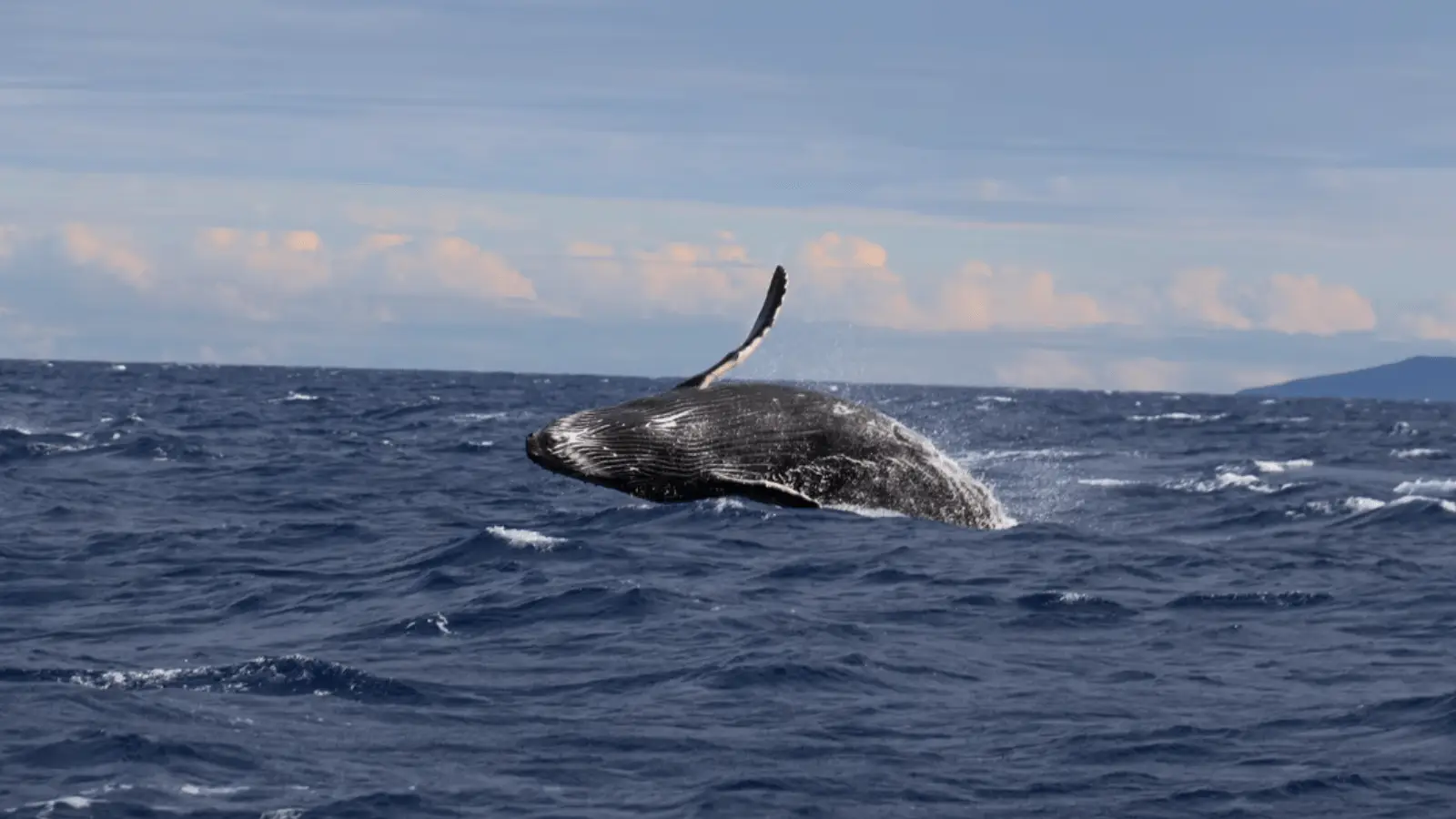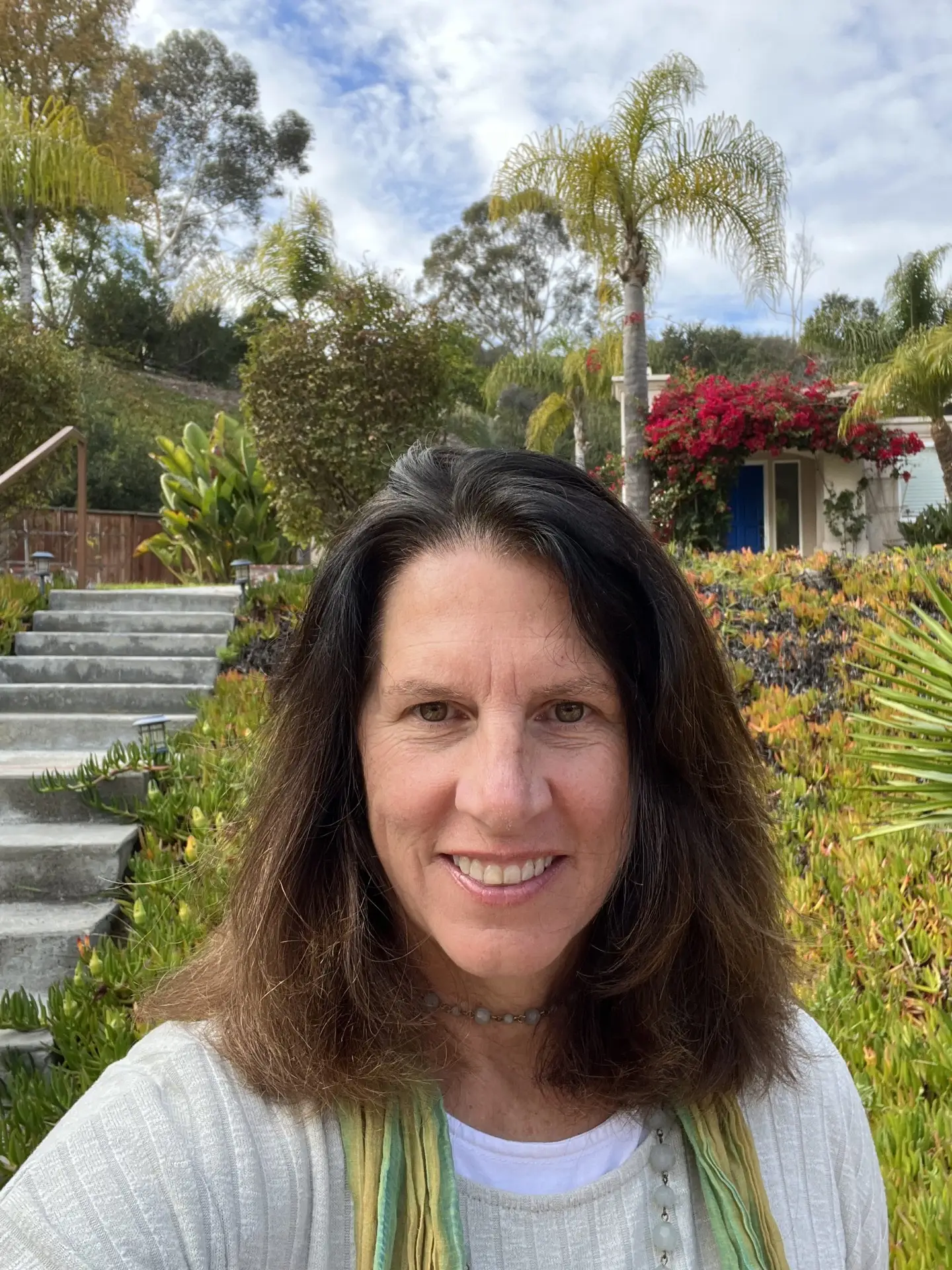Whales are among the largest and oldest animals on Earth with a spectacular tale of evolution. They began as land-dwelling, hoofed mammals more than 50 million years ago, and then returned to the sea as warm-blooded ocean dwellers. Like humans, whales are sentient creatures who nurse their offspring, form bonds and friendships, sing and play. They come in all shapes and sizes from the snow white arctic belugas and tusked narwhals, which inspired mythical tales of unicorns, to the great orca hunters, singing humpbacks and 100-foot blue whale leviathans, the largest mammal on earth.
Featured Photo: Humpback whale in Lahaina, Maui/Courtesy of Colton Jones

History
The warm waters of the Hawaiian Islands have long been a key habitat for humpbacks to breed, calve and nurse, but sadly these beautiful mysterious creatures have long been threatened by humans. Hawaii’s whaling era began in the early 1800s with Lahaina as its epicenter as whale oil was coveted for lamp fuel, lubricants and making soap and a whale’s ambergris for perfumes.
Luckily kerosene was developed in the mid 1800s and replaced the need for whale oil, but the peril from man continued. The global humpback population was greatly depleted by commercial whaling until the US government made it illegal to hunt or harm them when the Endangered Species Act passed in 1973. Overfishing, the effects of climate change, chemical and noise pollution, ship strikes and entanglement in fishing nets still threaten these awe-inspiring cetaceans.

Further Protections
Thankfully, Congress enacted the Hawaiian Islands Humpback Whale National Marine Sanctuary in 1992 to further protect these creatures. An estimated 14,000 humpbacks travel from Alaska to Hawaii each year, making these waters a humpback haven from October to March that offers travelers and locals a chance to commune with these incredible giants. While there is so much we do not know about whales — the male humpback is revered for its incredible litany of songs, believed to be a form of communication, especially during mating. Lucky ocean swimmers may find themselves dipping underwater in the sea and hearing such other worldly tunes.
Coming into close contact with a whales like the humpback is a life privilege and enormously thrilling experience. The humpback, some 60 feet long, loves to breach, hurling its massive 40 ton body out of the sea. They also spy hop, popping straight up to view their surroundings, and slap their flukes and pectoral fins along the water’s surface, all incredible sights to behold.
As humans, it’s our responsibility to protect and respect these magnificent creatures, so be sure to opt for credible whale watching outfitters and support organizations who are championing their preservation. We hand selected the following groups for their environmental stewardship and eco-conscious adventures.
Maui
Who: Pacific Whale Foundation (PWF)
Where: 300 Maalaea Road, Suite 211, Wailuku; 612 Front Street, Lahaina
What: This non-profit based in Maui is dedicated to safeguarding the ocean through science and advocacy and inspiring environmental stewardship. PWF also helps protect whales, dolphins, sea turtles, coral reefs, and other marine organisms, along with providing educational programs for children. Their eco-conscious whale watching tours called PacWhale Eco-Adventures are guided by marine naturalists and all proceeds from the trips benefit the foundation and its programs.
How to Help: In addition to enjoying a whale watching adventure that benefits PWF, you can adopt a marine mammal, sign up for the yearly Run & Walk for Whales or become a PWF member at a range of different price points to support the foundation’s ocean conservation and advocacy work. You can also help fund their environmental education programs like Keiki Whale Watch or Ocean Camp, so all children have access to these marine science-based experiences. Interested in being a citizen scientist? Then volunteer your time on a beach clean-up to support their Coastal Marine Debris Monitoring Program and record your findings. PWF also collaborates with the Sanctuary Ocean Count by hosting the Great Whale Count, part of Maui Whale Festival, and engages volunteers to track whales from the island’s shoreline on January 27, February 24 and March 30, 2024. pacificwhale.org
Oahu
Who: Wild Side Tours
Where: 85-371 Farrington Hwy, Waianae
What: Wild Side offers intimate charters that focus on education and ocean conservation with the intention to foster admiration and deep respect for marine mammals and their environment. A marine biologist founded and woman-owned charter company, Wild Side pride themselves of being tours with integrity, conducting environmentally responsible marine mammal interactions. A portion of tour fees are donated to the Wild Dolphin Foundation for marine conservation and education, regulatory reform, and research.
How to Help: Get educated on one of their tours and become an ocean ambassador. Be a boat-based volunteer or docent on the tours and help observe and record marine animal behavior and prevalence as Wild Side collaborates with Cascadia Research Collective. Their work has contributed to breakthroughs in marine mammal studies in Hawaii and helped grant endangered species status to the Hawaiian false killer whale. sailhawaii.com
Kauai and Hawaii (Big Island)
Who: Sanctuary Ocean Count
Where: Locations vary.
What: The Hawaiian Islands Humpback Whale National Marine Sanctuary is an area of the ocean between the Island of Hawaii, Kauai and Oahu and the playground of humpbacks from November to April. The Sanctuary Ocean Count, an education outreach and citizen science project that serves to promote public awareness about humpback whales and help record the population of the species, is hosted the last Saturday of every January, February and March. Part of a long-term survey, the Sanctuary Ocean Count is one of the world’s longest-running community scientist projects.
How to Help: Volunteers tally humpback whale sightings along with documenting the mammals’ behavior on the surface from various shore-based, designated sites along the coastlines of Oahu, Kauai or The Big Island. 2024 Ocean Counts are scheduled for three Saturday mornings: January 27, February 24 and March 30. oceancount.org
Looking for more travel inspo?
Follow us on Instagram @localgetaways_hi!

